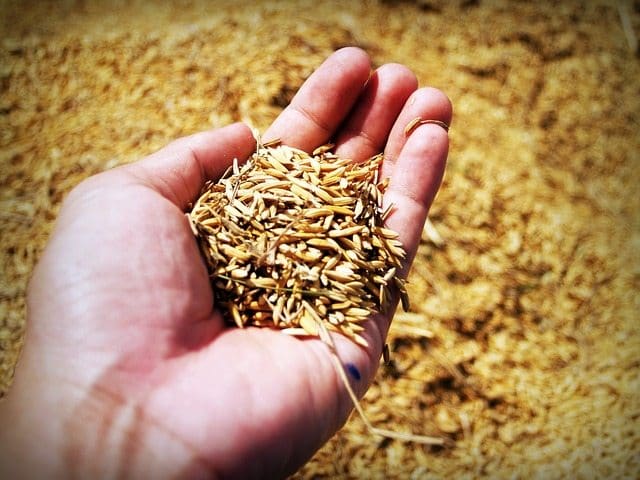By Victoria Nameth
Regional Crop Specialist, Tisdale
Regional Services Branch
Saskatchewan Ministry of Agriculture
Utilizing a seed treatment on farming operations has become an integral part of the cropping system. Treated seed is an effective tool that is used to control diseases and insects that are harmful to the crop through the application of a fungicide to the seed. Occasionally, at the end of the growing season, some treated seed can be leftover. Therefore, it’s our responsibility to make sure the left over product is disposed of while keeping beneficial management practices in mind.
A beneficial management practice (BMP) can be described as any agricultural management practice which: ensures the long-term health and sustainability of land-related resources used for agricultural production, positively impacts the long-term economic and environmental viability of agricultural production, and minimizes negative impacts and risk to the environment.
Improper disposal of treated seed poses risks to wildlife, livestock and the environment. Wildlife and livestock can ingest the treated seed which will cause toxicity resulting in death of the animals. If left open to the environment water sources can be contaminated. This poses the question of: what can be done with any leftover treated seed?
Regulations have been put in place to ensure the safe handling and disposal of excess treated seed. These can be found in the Canadian Seed Growers Association’s publication, Guide to Treated Seed Stewardship and in The Pest Control Products Regulations, 2015.
Management options are available for excess treated seed depending on the quantity left over.
[emember_protected for=”2″ custom_msg=’For more on this story, please see the Dec. 15 print edition of The Cross Roads.’]
Small quantities of unused treated seed
Before disposing of treated seed, always ensure to follow the seed treatment product label. The best option to dispose of small quantities is to seed it out on the field before switching to seeding a different crop or it can be planted in fallow.
Quantities of less than five litres can also be buried on the condition that the top of the pile is 30 cm or more below the soil surface, away from water sources and does not have human or animal access. Unused treated seed must be placed in the ground in order for the seed treatment to break down; therefore depositing seed on the soil surface is not an option. Seed can also be stored for the winter until the next growing season. This can be successful so long as the excess treated seed is stored in its original seed lot containers or in a correctly sealed, smooth walled hopper bottom bin. Before storing the treated seed check with the manufacturer this practice is acceptable in order to confirm seed viability.
Large quantities of unused treated seed
In the case of large amounts of unused treated seed left over at the end of the growing season, it can sometimes be returned back to the supplier if the product is still in sealed and undamaged packaging. However, in certain instances it is not able to be returned. If this is the case, it will need to be taken to a disposal facility. These can be in the form of a waste management facility, power plant or a municipal landfill. Disposal facilities accepting treated seed are required to have a permit from the Ministry of Environment in order to accept the product. Before taking unused treated seed to a disposal facility it is best to call ahead of time to ensure it will be accepted.
For more information on proper disposal of treated seed, contact Victoria Nameth at 1-306-878-8807 or the Agriculture Knowledge Centre at 1-866-457-2377.

